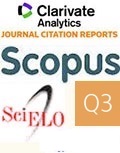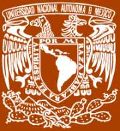|
Boletín de la Sociedad Geológica Mexicana Volumen 76, núm. 2, A020324, 2024 http://dx.doi.org/10.18268/BSGM2024v76n2a020324
|
 |
Identificación de la respuesta sísmica en pirámides del área de Chichén Itzá para preservar el patrimonio cultural
Identification of the seismic response in pyramids of the Chichén Itzá area for the preservation of cultural heritage
Martín Cárdenas-Soto1,*, Jesús Sánchez-González1, José A. Martínez-González1,
David Escobedo-Zenil1, Osiris Sandoval-Quintana2, Armando Carrillo-Vargas2,
Denisse L. Argote-Espino3, Pedro A. López-Garcia4, Gerardo Cifuentes-Nava2
1 Departamento de Geofísica, División de Ingeniería en Ciencias de la Tierra, Facultad de Ingeniería, Universidad Nacional Autónoma de México. Circuito de Investigación, Ciudad Universitaria, 04510 Coyoacán, CDMX, México.
2 Servicio Magnético, Instituto de Geofísica, Universidad Nacional Autónoma de México. Circuito de Investigación, Ciudad Universitaria, 04510 Coyoacán, CDMX, México.
3 Dirección de Estudios Arqueológicos, Instituto Nacional de Antropología e Historia. Lic. Verdad 3, 06000 Centro Histórico CDMX, México.
4 Posgrado en Arqueología, Escuela Nacional de Antropología e Historia. Periférico Sur esq. Calle Zapote, Colonia Isidro Fabela, 14030 Tlalpan, CDMX, México.
* Autor para correspondencia: (M. Cárdenas-Soto) This email address is being protected from spambots. You need JavaScript enabled to view it.
Cómo citar este artículo:
Cárdenas-Soto, M., Sánchez-González, J., Martínez-González, J.A., Escobedo-Zenil, D., Sandoval-Quintana, O., Carrillo-Vargas, A., Argote-Espino, D.L., López-Garcia, P.A., Cifuentes-Nava, G., 2024, Estudio de reconocimiento de la respuesta sísmica en pirámides del área de Chichén Itzá orientado a preservar el patrimonio cultural: Boletín de la Sociedad Geológica Mexicana, 76 (2), A020324. http://dx.doi.org/10.18268/BSGM2024v76n2a020324
Manuscrito recibido: 18 de octubre de 2023; manuscrito corregido: 4 de enero de 2024; manuscrito aceptado: 8 de enero de 2024.
ABSTRACT
In this study, an analysis was conducted on the seismic response of three archaeological structures located in the Chichén Itzá area. The objective of this analysis was to gather relevant information that may be utilized to monitor and ensure the preservation of these monuments. Ambient seismic noise measurements were conducted over three days using broad-band seismographs. The objective was to assess the vibration frequencies of three buildings, namely Las Monjas, El Caracol and El Castillo or Kukulkan Pyramid, using HVSR method. The findings indicate that the dominant frequency of the El Caracol building is 1.3 Hz. Nevertheless, it is noteworthy that within the Las Monjas and El Castillo structures, an observable fundamental frequency of 5.1 Hz is present, accompanied by a relative amplification of around 6. The findings of this study indicate the behavior of the two pyramids can be likened to that of a soil layer overlaying a stiff stratum. The noise recorded by a seismograph at the base of El Castillo enables the observation of a kinematic interaction phenomenon resulting from the disparate stiffness properties of the soil and the structure. No directional effect was observed on the HVSR ratios due to internal irregularities in the pyramids. Considering the half-width of the base of each pyramid and that the site response is of topographic origin, the calculus of shear velocity is 255 m/s. This velocity relates to non-compact materials resting on competent rocks with velocities more than 1000 m/s, materials subject to stress changes that may eventually lead to structural degradation. The findings of this study indicate the need for continuous monitoring and instrumentation of lower levels to assess the influence of substructures during preconstruction stages and determine whether there are any other effects due to the karstic nature of the subsurface.
Keywords: seismic noise, seismic interferometry, HVSR, topographic site effects, Kukulkan Pyramid.

